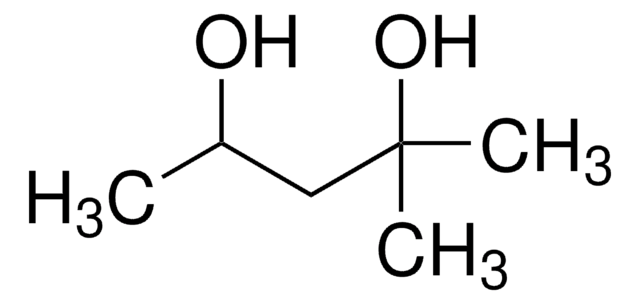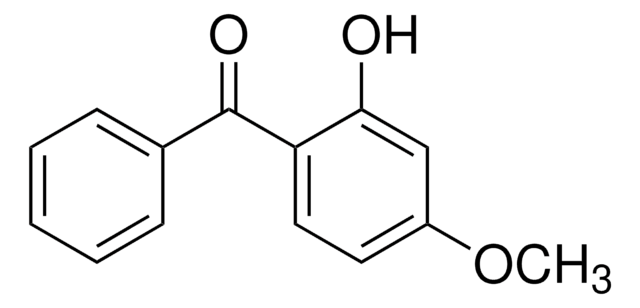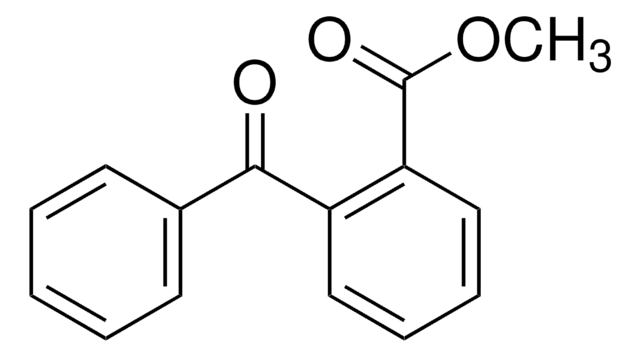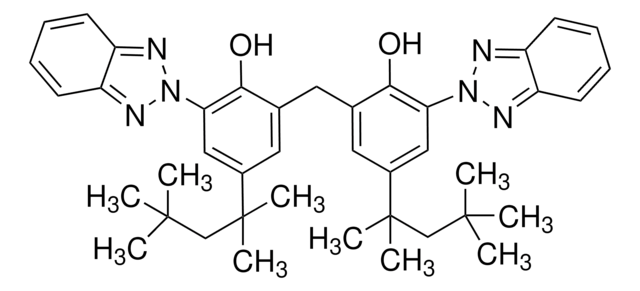437395
2-Ethylhexyl 4-(dimethylamino)benzoate
98%
Synonym(s):
2-Ethylhexyl 4-(N ,N -dimethylamino)benzoate, 2-Ethylhexyl 4-(dimethylamino)benzoate, 2-Ethylhexyl N ,N -dimethyl-p -aminobenzoate, 2-Ethylhexyl p -(dimethylamino)benzoate, 4-(Dimethylamino)benzoic acid 2-ethylhexyl ester, EHDAB, Octyl dimethyl PABA
About This Item
Recommended Products
Assay
98%
form
liquid
refractive index
n20/D 1.542 (lit.)
bp
325 °C (lit.)
density
0.995 g/mL at 25 °C (lit.)
SMILES string
CCCCC(CC)COC(=O)c1ccc(cc1)N(C)C
InChI
1S/C17H27NO2/c1-5-7-8-14(6-2)13-20-17(19)15-9-11-16(12-10-15)18(3)4/h9-12,14H,5-8,13H2,1-4H3
InChI key
WYWZRNAHINYAEF-UHFFFAOYSA-N
Looking for similar products? Visit Product Comparison Guide
General description
Application
- Study of the photochemical transformation of 2-ethylhexyl 4-(dimethylamino) benzoate (OD-PABA) under conditions relevant to surface waters: This research investigates the photochemical behavior and transformation products of 2-ethylhexyl 4-(dimethylamino)benzoate in aquatic environments, highlighting its environmental impact (Calza et al., 2016).
- Photoprotection or photodamage: a direct observation of nonradiative dynamics from 2-ethylhexyl 4-dimethylaminobenzoate sunscreen agent: The paper provides insights into the nonradiative dynamics of 2-ethylhexyl 4-dimethylaminobenzoate, assessing its effectiveness as a sunscreen agent and potential for photodamage (Ma et al., 2018).
- Bioaccumulation and biomagnification of 2-ethylhexyl-4-dimethylaminobenzoate in aquatic animals: This study examines the bioaccumulation and biomagnification potential of 2-ethylhexyl-4-dimethylaminobenzoate in aquatic organisms, providing valuable data on its environmental persistence and effects (Lu et al., 2018).
Signal Word
Danger
Hazard Statements
Precautionary Statements
Hazard Classifications
Repr. 1B
Storage Class Code
6.1C - Combustible acute toxic Cat.3 / toxic compounds or compounds which causing chronic effects
WGK
WGK 2
Flash Point(F)
374.0 °F - closed cup
Flash Point(C)
190 °C - closed cup
Personal Protective Equipment
Choose from one of the most recent versions:
Already Own This Product?
Find documentation for the products that you have recently purchased in the Document Library.
Customers Also Viewed
Our team of scientists has experience in all areas of research including Life Science, Material Science, Chemical Synthesis, Chromatography, Analytical and many others.
Contact Technical Service













